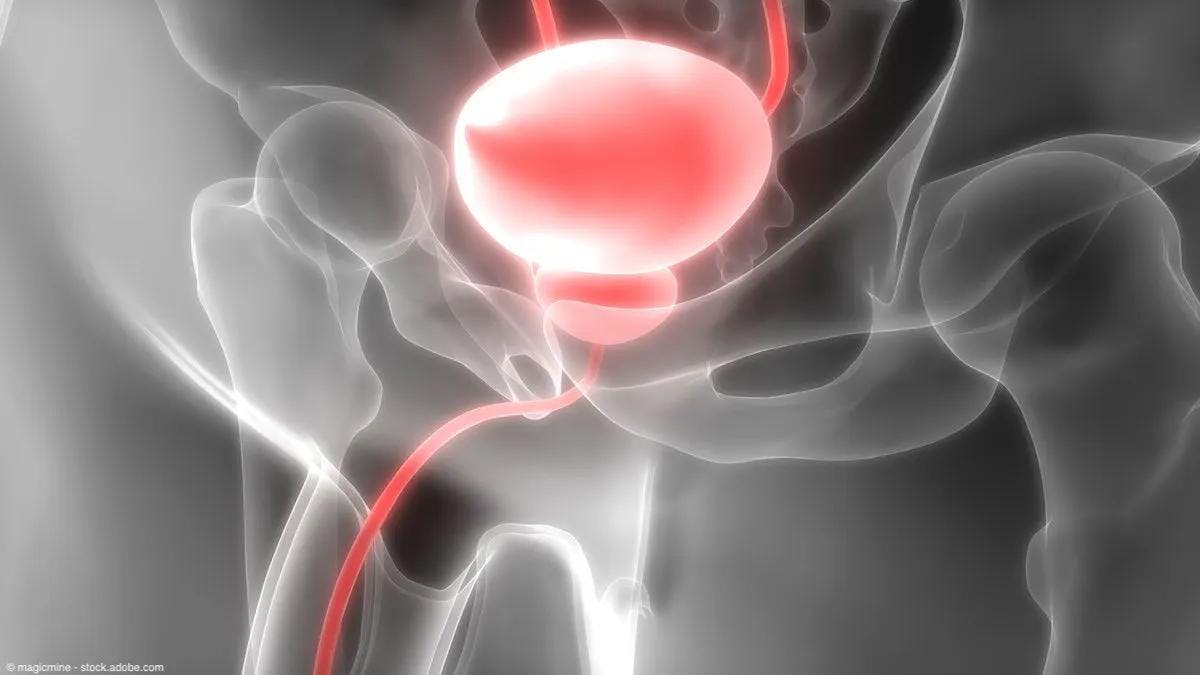News
Article
Urology Times Journal
Ultrasonic propulsion for clearance of residual kidney stone fragments reduces relapse
Author(s):
In total, 8 of 40 patients who underwent ultrasonic propulsion experienced relapse, compared with 21 of 42 patients who underwent observation.
Treatment with the investigational ultrasonic propulsion procedure to facilitate clearance of residual kidney stone fragments was shown to reduce relapse with minimal added risk compared with observation, according to data from a recent study (NCT02028559) published in the Journal of Urology.1
The primary end point for the trial was relapse, defined as stone growth, a stone-related urgent medical visit, or surgery by 5 years or study end.

“Other [studies] have [assessed] how residual fragments cause relapse (our control group), or [how] noninvasive procedures such as inversion and percussion done by the patient help fragments pass, but to our knowledge this is the first study of the long term benefit of removing residual fragments,” explained lead author Matthew D. Sorensen, MD, MS, FACS, of the University of Washington in Seattle, in correspondence with Urology Times®. “[We observed a] significant benefit: people relapsed in 4.2 years not 2.8 years. Over 30 years, that means 7 relapse events vs 11, not counting that 1 person could have several health care visits for 1 relapse event.”
Overall, data showed that patients who underwent ultrasonic propulsion demonstrated a longer time to relapse compared with patients who underwent observation (P < .003). Specifically, the restricted mean time to relapse was 1530 ± 92 days in the treatment arm vs 1009 ± 118 days in the control arm, translating to a 52% longer time to relapse among those who underwent ultrasonic propulsion.
The risk of relapse was also lower in the treatment arm. In total, 8 of 40 patients who underwent ultrasonic propulsion experienced relapse, compared with 21 of 42 patients who underwent observation (HR, 0.30; 95% CI, 0.13-0.68). An unscheduled, symptomatic clinical visit or surgery––2 markers of relapse for this study––occurred in 7 patients in the treatment arm and 16 patients in the control arm.
Further, 63% (24) of patients in the treatment arm passed fragments within 3 weeks of treatment vs 5% (2) of patients in the control arm (OR, 30.00; 95% CI, 6.34-142.00).
Senior author Jonathan D. Harper, MD, of the University of Washington, added in correspondence with Urology Times, “Clearing fragments was done in the office with a new noninvasive technology that showed very little risk. Most participants passed their fragments right away on the next urination.”
Regarding safety, 63% (25) of patients in the treatment arm and 40% (17) of patients in the control arm experienced an adverse event (AE). AEs were generally mild, transient, and self-resolving. The most common AEs among those who underwent ultrasonic propulsion were discomfort/pain (38%), urinary frequency/urgency (20%), diarrhea (13%), and dysuria (10%).
In total, the multi-center, prospective, open-label trial enrolled 82 adult patients who had residual kidney stone fragments that were individually 5 mm in size or smaller and visible on imaging at least 4 weeks after stone surgery. The study was conducted by the University of Washington.
Patients included in the study were randomly assigned 1:1 to undergo ultrasonic propulsion with the Propulse 1 device (n = 40) or to observation (n = 42).2 In the treatment arm, 11 patients (28%) underwent more than 1 ultrasonic propulsion procedure, equating to an average of 1.35 treatments per patient.
The primary end point for the trial was relapse, defined as stone growth, a stone-related urgent medical visit, or surgery by 5 years or study end. Secondary end points included fragment passage within 3 weeks and adverse events within 90 days.
Overall, the authors concluded, “Our study showed that removing residual fragments by ultrasonic propulsion reduced relapse as measured by future stone growth or stone-related urgent medical visit or surgery.”1
References
1. Sorensen MD, Dunmire B, Thiel J, et al. Randomized controlled trial of ultrasonic propulsion–facilitated clearance of residual kidney stone fragments vs observation. J Urol. Published online August 15, 2024. Accessed August 29, 2024. doi:10.1097/JU.0000000000004186
2. Safety and effectiveness of the ultrasonic propulsion of kidney stones. ClinicalTrials.gov. Last updated February 2, 2024. Accessed August 29, 2024. https://clinicaltrials.gov/study/NCT02028559

Newsletter
Stay current with the latest urology news and practice-changing insights — sign up now for the essential updates every urologist needs.





























